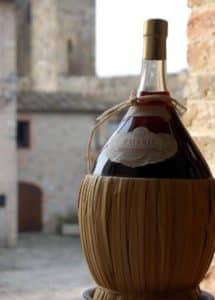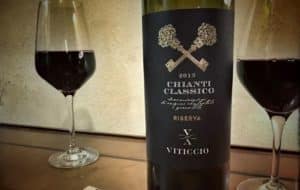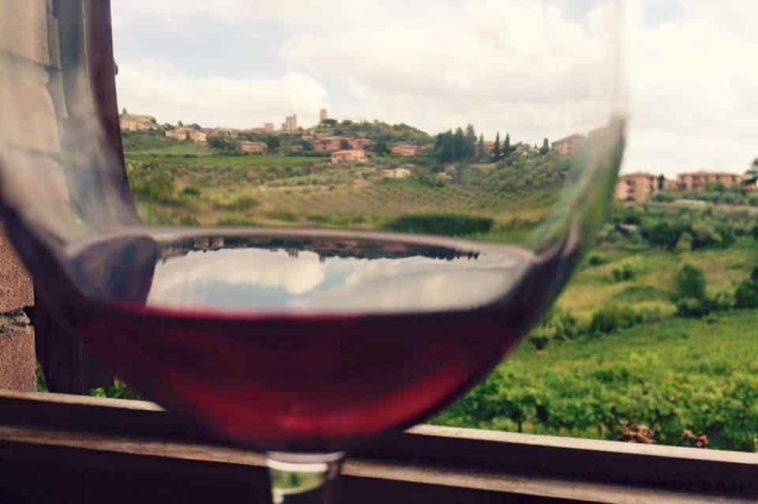Chianti Classico Wine is famous all over the world
 Chianti Classico Wine is usually produced all throughout Tuscany. However, its true origins can be traced all the way to the fascinating region that can be found between Florence and Siena.
Chianti Classico Wine is usually produced all throughout Tuscany. However, its true origins can be traced all the way to the fascinating region that can be found between Florence and Siena.
In 1716, the Grand Duke of Tuscany, Cosimo de’ Medici III, declared that this Italian region will be given permission to produce wine which is now known to many as Chianti Classico. This famous wine can be easily identified by its popular label that depicts the Gallo Nero or the black rooster.
It was commonly perceived that the name Chianti originated from the word that is used to describe the bold black rooster calls that are heard in the deep woodlands. The Black Rooster label on the bottle is a sure way of telling that you’re enjoying an authentic Chianti where you can taste the rich, local Sangiovese grape and the Consorzio Vinco Dianti Classico.
Because of the amount of Chianti being produced in Tuscany, a strong focus has emerged which signifies the return to the traditional way of producing wine. More vineyards are now focusing their efforts on the cultivation and environmental responsibility.
There is no denying that Tuscany is the best area where wine aficionados would want to stay at. The number of vineyards, wine bars, and specialty stores that are scattered throughout the region makes it a delight for wine lovers to experience this luxurious beverage.
The region of Chianti as a whole is a large realm wherein the Chianti Classico is only a small part of it. It has 8 distinct areas wherein each one is permitted to produce wines that consist of their regional Chianti name. But among the 8 districts, the Chianti Classico zone is the one that is most renowned, and the wines produced here are highly regarded as the premier Chianti wines. Almost every country in the world imports the wines produced by Chianti Classico, and you can say that it is the powerhouse of winemaking in all of Italy.
It was in 1995 when the Chianti Classico area was recognized and awarded the DOCG status, wherein it regulates where and how the famous wine is being produced. Even though that the regulations are becoming more liberal, they still recognize the systematic framework by the way how the Chianti Classico can be produced, and each producer must guarantee that the process is fully adhered to.
For a bottle of wine to be labeled with the Chianti Classico label, it must have a minimum 80% Sangiovese grape. Wine lovers will immediately notice the strong undertones of violets and floral bouquets that provide the deep, rich taste of the wine. The good acid that it has makes it the perfect partner for vegetables, pasta, and white meat dishes.
Even though that Chianti is the famous wine of the Chianti Classico, you should know that it isn’t the only wine produced here. There are other wines that also earned the title “Super Tuscans” which are also produced in this area and have made a huge reputation in their own right.
Compared to the producers of the Chianti Classico Wine
 The cellars of the Super Tuscan have full flexibility when it comes to how they produce their wines. The management of the production process, varieties of the grapes, and the cellaring methods vary greatly from every producer. So even though that all Chianti Classico wines have at least 80% Sangiovese grapes, a majority of the Super Tuscan producers use other grapes that are grown from much further afield like the Cabernet Sauvignon or Merlot.
The cellars of the Super Tuscan have full flexibility when it comes to how they produce their wines. The management of the production process, varieties of the grapes, and the cellaring methods vary greatly from every producer. So even though that all Chianti Classico wines have at least 80% Sangiovese grapes, a majority of the Super Tuscan producers use other grapes that are grown from much further afield like the Cabernet Sauvignon or Merlot.
All of the varieties of the Super Tuscan has a bespoke blend wherein it is finely tuned based on the style that the producer wants. Unlike the Chianti Classico, the Super Tuscans don’t get the regulatory approval to make it stand out but rather the meticulous production processes and artistic talent that the producers use for making this one.
Read About Carnival In Viareggio
Read About Typical Desserts In Tuscany
Visit the home

